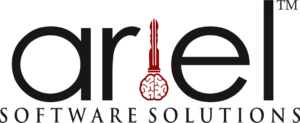
The development landscape of software is currently changing at a pace unprecedented before. It is, hence, presenting businesses with very transformative opportunities to innovate and grow. With the growth of technological advancements that tend to shape industries, taking up the latest software development trends seems to be a requirement nowadays to stay ahead of market demands.
This blog explores five transformative software development trends that are changing the face of industries around the world. By understanding and integrating these trends, businesses can position themselves at the forefront of technological advancement, ensuring resilience and growth in an ever-changing landscape.
1. Low-Code and No-Code Development
Low-code and no-code platforms have revolutionized software development by enabling rapid application creation with minimal coding expertise. These platforms are particularly valuable for businesses looking to:
- Increase Software Development Cycles: Drag-and-drop interfaces and pre-fabbed modules allow for a vastly shorter development cycle.
- More Accessibility: Allow non-developers to contribute to your software’s creation, and help close the gap between business and IT teams.
- Increase Efficiency: Reduce reliance on super-specialized developers, and the cost of software development declines sharply.
Some of the big players in this space include Microsoft Power Apps, OutSystems, and Mendix. They provide their tools to help various kinds of business needs. Therefore, the use of such platforms is going to witness a significant upsurge as businesses become agile and adaptable.
Technical insight: Today’s low-code platforms support cloud services, APIs, and advanced data visualization tools that allow for complex enterprise applications. Salesforce’s Lightning Platform, for example, is capable of supporting AI workflows, and Microsoft Power Platform supports the seamless integration with Azure services.
Why this matters for your business: With the integration of low-code and no-code, your business will streamline development, reduce overhead, and react quickly to the demands of the market.
2. AI-Driven Development
Artificial intelligence (AI-driven development) is still revolutionizing the software development lifecycle with efficiency and accuracy-improving tools and technologies. Some of the primary AI-driven capabilities include the following:
- Code Generation: Tools such as GitHub, Copilot, and Tabnine aid developers by automatically generating code snippets, reducing manual effort, and improving productivity.
- Bug Detection and Resolution: AI-powered platforms such as DeepCode and SonarQube analyze codebases for vulnerabilities, suggesting fixes to improve code quality.
- Automated Testing: AI-based testing tools Testim and Applitools can drive the generation and execution of smart test cases. This further decreases the time spent in the manual testing process.
- Personalized User Experiences: AI assists developers in building applications that provide tailor-made experiences for users by behavior and preference.
Technical insight: Advanced machine learning models like OpenAI’s Codex are now being integrated into development environments, offering real-time suggestions and debugging capabilities. Moreover, AI-driven DevOps tools are optimizing CI/CD pipelines, enabling faster and more reliable deployments.
Why it matters for your business: Leveraging AI-driven development in software development can lead to faster, more reliable, and user-centric applications, setting you apart from competitors.
3. Cloud-Native Development
Cloud-native development is no longer a choice for businesses seeking to be scalable and resilient. Cloud-native applications are built to leverage cloud environments entirely and can offer advantages like the following:
- Scalability: Scalable applications are designed to be easily scaled with container orchestration tools like Kubernetes, handling changing workloads.
- Resilience: Achieve high availability and fault tolerance by utilizing distributed architectures and microservices.
- Speed: Use Infrastructure as Code tools like Terraform and Ansible to accelerate the deployment and updates of your application.
Technical insight: Additional innovative technologies, such as service mesh examples like Istio and serverless frameworks like AWS Lambda are further enhancing cloud-native architecture. These tools facilitate effortless management of inter-service communications and reduce operational overhead from dynamically allocated compute resources.
Why it matters to your business: Cloud-native development accelerates time-to-market, reduces operational expenses, and meets modern customer expectations in real time.
4. Cybersecurity-First Development
With cyber threats increasing, the integration of cybersecurity at every stage of the development lifecycle has become non-negotiable. Known as DevSecOps, this approach emphasizes the following:
- Proactive Security Measures: Security protocols in the early stages of development, such as static and dynamic application security testing.
- Automation: Tools such as Snyk, Veracode, and WhiteSource automate vulnerability scans and dependency checks.
- Compliance: Alluring assurance that applications conform to some regulatory requirements like GDPR, CCPA, HIPAA, and ISO 27001.
- Runtime Protection: Runtime application self-protection detects and mitigates the attack while it is going in the runtime.
Technical insight: Advanced security framework that incorporates Zero Trust Architecture, with tools like HashiCorp Vault, which guarantees protection by access control and data security across extremely distributed environments.
Why it matters for your business: A cybersecurity-first approach minimizes risks, safeguards your reputation, and ensures compliance with global standards.
5. Sustainability in Software Development
Sustainability is no longer a buzzword; it’s a necessity. Green software development focuses on reducing the environmental impact of applications by:
- Optimizing Code: Writing efficient, resource-friendly code to minimize CPU and energy consumption.
- Choosing Environmentally Friendly Hosting Providers: Data centers that use renewable energy, such as Google Cloud’s Carbon-Free Energy.
- Lifecycle Management: Ensuring that software is upgraded and retired to avoid wastage of resources and ensure the best performance.
- Green Algorithms: Developing algorithms with low computational resources and energy consumption, especially for applications involving AI and big data.
Technical insight: Tools such as AWS’s Carbon Footprint tool and Microsoft’s Emissions Impact Dashboard enable businesses to measure and optimize their environmental impact. In addition, edge computing is reducing the need for energy-intensive centralized processing.
Why it matters for your business: Sustainable development practices are beneficial to the environment and improve your brand image, attracting eco-conscious customers and investors.
Staying Ahead: Next Steps

To align your business with these software development trends:
- Conduct a Technology Audit: Review your current tools and processes to determine what is needed to close those gaps around adopting these trends.
- Invest in Training: Upskilling of your teams through the adoption of AI-driven development tooling, DevSecOps practices, and cloud-native architectures.
- Integrate Sustainability Goals: Determine green software practice benchmarks for aligning with global environmental standards.
- Collaborate with Experts: Partner with an experienced firm like Ariel Software Solutions, to really understand the implementation of all these trends.
At Ariel Software Solutions, we specialize in enabling businesses to leverage cutting-edge technologies to achieve their objectives. Whether it is through low-code development, AI-driven development, or cloud-native solutions, our team walks you through every step.
Get in touch today and learn how we can empower your business to thrive in the ever-evolving digital landscape.




